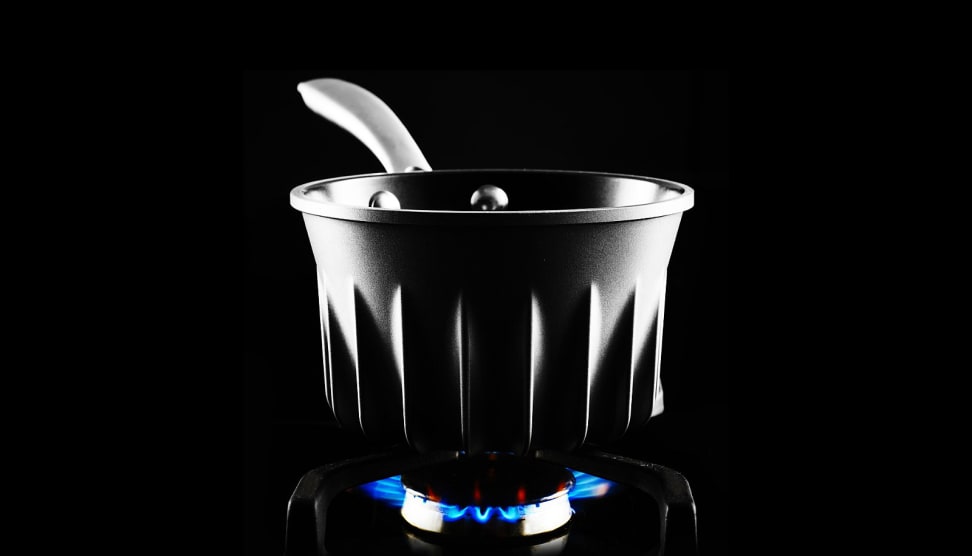It Took a Rocket Scientist to Perfect the Saucepan
The Flare pot is the ideal fusion of science and cooking.
 Credit:
Credit:
Products are chosen independently by our editors. Purchases made through our links may earn us a commission.
When it comes to cooking tech, we look for two things: efficiency and performance. Design is perhaps a close third. It’s rare for an appliance—be it an oven or cooktop—to excel in all three of these categories. And rarer still is an accessory—say, a saucepan—that fulfills this triumvirate of quality.
But that’s what you get when an Oxford University engineer devotes three years of research to creating the perfect cooking pot. If induction heating is the super-efficient cooking technology of the future, then these pots and pans are the super-efficient cookware of the future. (Though, ironically, you couldn't use the two together.)
Dr. Thomas Povey designed the Flare pot with outdoors gas cooking in mind. Winds and high altitudes can make food preparation a wasteful, time-consuming drag, so what if you designed a pot that was ultra-efficient? Not only would it conserve energy, it would result in faster cooking times as well.
Flare pots accomplish both goals, requiring 40 percent less heat to reach a boil. How? The unique “fin” design channels heat from an open flame through funnels along the side of the pan, making the best possible use of heat and spreading it evenly throughout the interior. The pots are also made of cast aluminum, which is much more conductive than cast iron or stainless steel.
Though they only retain their quick-heating advantage when used with gas burners, the pots will also work on electric and ceramic heating elements. Supposedly, they'll deliver more even heat than traditional cookware, regardless of heat source.
The fin-heavy design approach draws on Dr. Hovey's experience as a real-life rocket scientist.
“I do a lot of work on cooling systems for jet engines, which can be thought of as a heat-exchanger,” he told Wired. “It’s the same kind of problem but in reverse. In jet engine parts we struggle to keep parts cool, and the heat exchanges inside those parts are designed to take as much heat out as possible. By putting a carefully designed heat exchanger on the outside of a pan we increase the flow of heat from the flame to the pan, and can control how evenly the heat enters the pan.”
Flare pots are currently available for pre-order through British supplier Lakeland, and range in price from $85 to $145.
